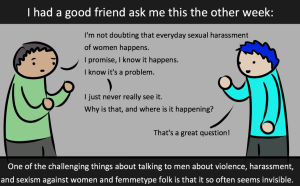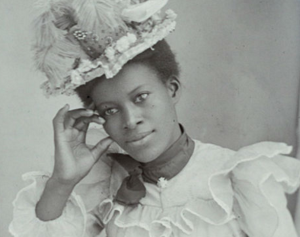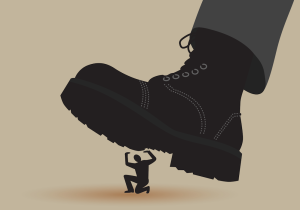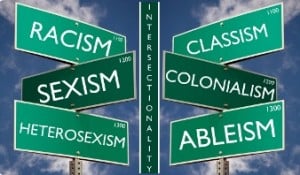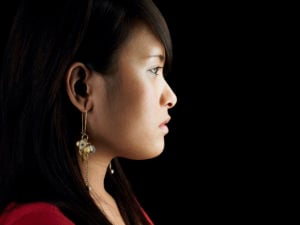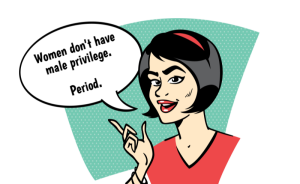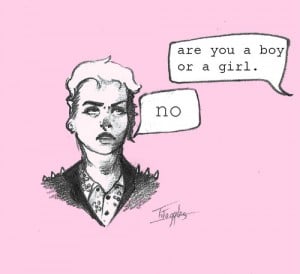
A person with long hair in a ponytail looks serious against a dark background.
(Content Warning: rape culture, racist slurs)
When women are told, “You know you want it.” When the US elects as president a man who openly claims to grab women’s genitals without their consent. When women experience street harassment on a daily basis. When survivors of rape are dismissed, disbelieved, and told they were “asking for it.”
When Asian women are stereotyped as “submissive” and “exotic.” When fetishes for Asian women get reduced to and perceived as, “Well, why is it a problem that you’re told you’re all so beautiful and delicate? It’s a compliment.”
When men send online dating messages sharing that they’re “obsessed with” having sex with Asian women. That they can’t wait to conquer our “tight,” “small” bodies.
When searching for “Asian women” on Google reveals predominantly sexualized and pornographic images or keyword searches on “torture” reveal images of Asian women.
All of the above are examples of rape culture – cultural practices that excuse or tolerate sexual violence by ignoring, trivializing, or normalizing it. Rape culture is entrenched in society at ideological, institutional, and individual levels.
For Asian women, experiences of racism and sexism intersect with rape culture.
For this article, I’m focusing on how this shows up primarily for East Asian women – however, it’s important to note the unfortunate ways Asian women become homogenized by others as East Asian. There is some overlap here with what South Asian, Southeast Asian, Middle Eastern, and Muslim women experience, but these communities have unique experiences that go beyond the scope of this piece.
Being fetishized, exoticized, and sexualized as geishas, china dolls, lotus blossoms, and dragon ladies to being perceived as “model minorities” and also “perpetual foreigners.” These stereotypes leveraged against East Asian women have been normalized, just like rape culture. These tropes can be found in representations in media, comments that harass us sexually and racially, and ways we’re constructed via laws and policy.
They’re tied to experiences of racialized, sexual violence. And they might even be something that you dismiss as harmless – or even as compliments.
As a result of society’s common dismissal, these experiences of racialized, sexual violence too often go ignored. We must recognize what’s really going on here in order to do something about it.
So below are ways that racist and sexist tropes leveraged against East Asian women intersect with rape culture.
1. The Idea of ‘Geishas’ and ‘China Dolls’ Objectifies Us
The “Lotus Blossom” and “China Doll” stereotypes objectify East Asian women as compliant, subservient, and delicate.
Imagined as decorative object or a toy, these tropes commodify Asian women into passive objects – made to be seen, played with, or touched, but not heard. Their value relies only on their bodies or looks.
It creates a false fantasy where exotic aesthetics get projected onto Asian women.
As these tropes homogenize all Asian women as “Chinese,” but they also stem from a specific history where Chinese women were imported as part of a sex trade.
Similarly, the current appropriations and historically inaccurate reductions of “geisha” into a sexualized identity imagines Asian women as passive commodities of sex.
The emphasis of these stereotypes on submission and docility imagines them as without agency and without the capacity to give consent. These assumptions can’t possibly imagine Asian women to make their own decisions or have power over their bodies.
Imagining Asian women as deferential and obedient to “authority” assumes consent when it’s not given.
Mainstream media, including the porn industry, has created a dangerous myth that Asian women enjoy being dominated or serve at the behest of someone else’s pleasure.
For example, in AMC’s Humans, Gemma Chan plays Anita, a programmable robot that’s sold to a white man, Joe. In the show, Joe uses Anita for sex. Written as his property and perceived as a literal object, she is given no capacity to consent to these acts.
These fantasies also circulate ideas about consent when it’s not actually given, and there are serious historical and current implications.
The belief that women are entitlements, as “things” to earn or win through persistence and hard work, can be traced historically. For example, as Asia is framed as a series of conquests, Asian women are seen as “spoils of war” or prizes to be “claimed.”
After the Phillipine-American War, after World War II and Japan’s surrender, after the Korean War, after the Vietnam War, US occupation in East and Southeast Asian countries developed local sex industries and sex trafficking rings to serve soldiers.
Sexual access to women’s bodies was rationalized as rightful “necessity’” for US soldiers, establishing the assumption that Asian women are supposed to provide sexual services.
The legacy of sexual imperialism carries on today.
Asians and Pacific Islanders also make up the largest group of people trafficked into the US (As there are a lot of misconceptions and complexities around the sex industry, it’s important to know that sex trafficking specifically refers to people who were coerced by force into selling sex.)
A couple years ago, a startup called The Dating Ring aspired to fly “dateable women” to San Francisco, and drew its inspiration from World War II sex slaves in Japanese military brothels, a horrific practice downplayed by the label “comfort women.”
Also, the mail-order bride industry continues to exploit Asian women as commodities, as colonization and global capitalism have produced economic inequalities where some Asian women must sell themselves to men for marriage in order to garner financial support – and intimate partner violence incidents are particularly high for women in these arrangements.
Tied to this ongoing practice of objectification and commodification via logics of conquest are compulsions to “tame” and “domesticate” people considered “exotic.”
2. Tropes of Hypersexuality and Exotification Assume Rape to Be Impossible
As discussed above, fetishization of Asian women perceives our bodies as objects to be conquered and discovered traces back to colonial legacies that justified rape and enslavement.
The exotification of Asian women and the perpetual foreigner myth draw upon the notion of distance to depict Asian women as “less than” human curiosities.
Historically, “Yellow Peril” and other anti-Asian sentiments have created a perception of Asian women as immorally devious and have led to anti-immigration policies that target Asian women.
While on the surface being called “exotic” or told “You’re all so beautiful” seems complimentary, exotifying Asian women reduces an entire group of women into sexual stereotypes – and also targets us in sexually violent ways.
Perceiving Asian women as exotic also projects a fantasy around how Asian women behave and act, including imagining us as always wanting sex or available for sex.
Myths that equate “exotic” with “promiscuous” minimize and normalize experiences of sexual assault.
From the Miss Saigon and Suzie Wong tropes, both literary and film history have played role in the dual construction of East Asian women as subservient and also in need of rescue by white men.
The many problems with these narratives include the attempt to make Asian women believe that we are worth less and can only be given full humanity through a “white lover’s touch.”
Being constructed as sexual objects makes it impossible for Asian women to be seen as survivors of rape, and also collaborates with the seemingly contradictory trope of us as “childlike” and in need of protection.
This links to logics of rape culture such as “She was asking for it” or “I was doing her a favor.”
3. Toxic Masculinity Has Violent Implications in Our Communities
One in ten Asian American women report violence from an intimate partner, and these numbers increase when detailed by ethnicity and nationality. 56% of Filipinas and 64% of Indian and Pakistani women had reported experiences of sexual violence.
Anna Bui. Annie Le. Felicia Lee. Tong Shao. Su Hsin. Vantha Tho.
These are just some of the names of Asian women who have been murdered by men – men who were former partners, men who felt scorned or rejected by women they felt entitled to, men who then thought murder was the appropriate response. These women were killed violently by men who took up logics of toxic masculinity.
These men, with such feelings of entitlement towards women and towards sex with women, are not anomalies.
Toxic masculinity is a concoction of entitlement that brings together white supremacy and rape culture – it is masculinity steeped in racism, classism, and heterosexism.
The gendered tropes of Asian women’s hyperfeminization and sexualization have served as counters to pervasive tropes of “emasculinazation” for Asian men. Some men in our own communities have picked up toxic, misogynistic masculinity as a response to this emasculation – as the only possible way forward to refusing these tropes
Reappropriate’s Jenn Fang has written about this conflation of masculinity with misogyny – and the problems with practicing “manhood” through the violent mistreatment of women. This response picks up a narrow vision of masculinity, where masculinity can only be defined and empowered by explicit heterosexuality.
4. The Model Minority Myth Erases and Silences Experiences of Sexual Violence
In addition to erasing inequities in material access, the model minority myth is a narrative that prevents racial justice.
As the model minority myth also links with other stereotypes of Asian Americans mashes together different ethnicities, nations, cultures, languages – mashing together people – to produce the idea that “all Asians are the same.” That we are interchangeable.
This erasure of individualism, in a society that prioritizes individualism as fundamental to humanity, is a form of dehumanization.
The model minority myth can be tied to tropes about Asian women being “obedient“ and “passive” – that we should be “quiet” and “silent.”
The myth also plays a large role in the erasure of sexual violence in Asian American and Pacific Islander communities. 41–61% of Asian American women experience physical and/or sexual violence, but these incidents of assault go largely unreported.
If we are supposed to be “models” of racial exceptionalism, how could we possibly face any problems such as violence? How dare we have feelings of pain and grief?
***
Legacies of white sexual imperialism continue to be taken up by white men as well as men of color – and we must grapple with the ways gendered, racialized, and sexualized violence work in our communities.
Though they may seem like a harmless infatuation with Asian women and our bodies, fetishes of Asian women link to experiences of racist, sexual violence and have negative impacts on our physical safety and mental and emotional health.
If we are cute, fragile, delicate, then we must be in need of manly protection. Or if we are cold, heartless, compassionless dragon ladies, then we need to be “tamed.”
Either way, we end up being denied agency over our own bodies, consent, and safety. These fetishes and stereotypes have had further serious and violent implications as they contribute to rape culture.
[do_widget id=’text-101′]
Rachel Kuo is a Contributing Writer for Everyday Feminism and a scholar and educator based in New York City. Her professional background is in designing curriculum and also communications strategy for social justice education initiatives. You can follow her on Twitter @rachelkuo. Read her articles here.
Search our 3000+ articles!
Read our articles about:
Our online racial justice training
Used by hundreds of universities, non-profits, and businesses.
Click to learn more





